Last updated on
Discover the pros and cons of glass and tile backsplashes to help you make an informed decision on which one is best for your home.
I have seen my fair share of kitchen renovations. And one of the most common questions I get from clients is whether they should go for a glass or tile backsplash. It’s an age-old debate that has left many homeowners scratching their heads.
I remember one particular client, Sarah, who was torn between the two options. She had already picked out her cabinets and countertops, but couldn’t decide on the backsplash. She wanted something that would tie everything together and make her kitchen look polished.
As we sat down to discuss her options, I could see the worry etched on her face. She had done her research and read countless articles online, but she still couldn’t make up her mind.
That’s when I realized that this was a common problem among homeowners – there is just too much information out there! So today, let’s break it down and take a closer look at glass vs. tile backsplashes to help you make an informed decision for your own home renovation project.
Key takeaways:
- Glass backsplashes create an illusion of space and depth.
- Glass backsplashes come in various colors and patterns.
- Glass backsplashes have no grout lines and require less cleaning.
- Tile backsplashes are more durable and resistant to damage.
- Tile backsplashes offer endless design options and are less expensive.
What's Inside
Glass Backsplash Pros
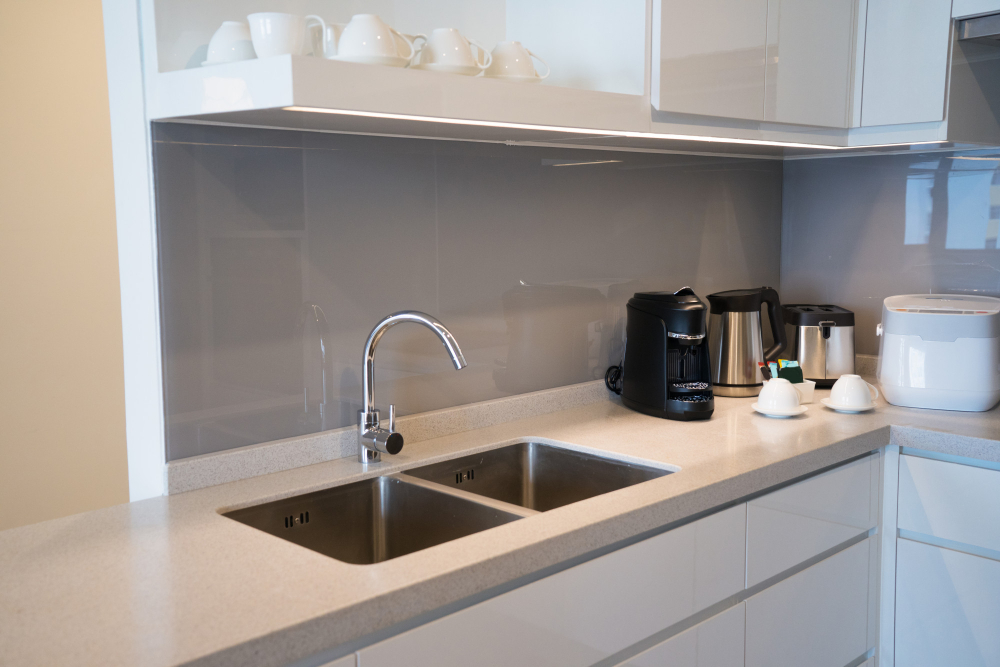
After discussing Sarah’s options, we decided to take a closer look at glass backsplashes. Glass is a popular choice for modern kitchens because it offers several advantages over other materials.
For one, it creates an illusion of space and depth that can make even the smallest kitchen feel larger. Another advantage of glass backsplashes is their versatility in design.
They come in various colors and patterns that can complement any kitchen style – from sleek contemporary to rustic farmhouse. Glass also has reflective properties that allow light to bounce around the room, making your kitchen brighter and more inviting.
And unlike tile or stone, there are no grout lines on a glass backsplash which means less cleaning time! if you’re looking for a low-maintenance option with plenty of design possibilities then consider installing a glass backsplash in your home renovation project!
Glass Backsplash Cons
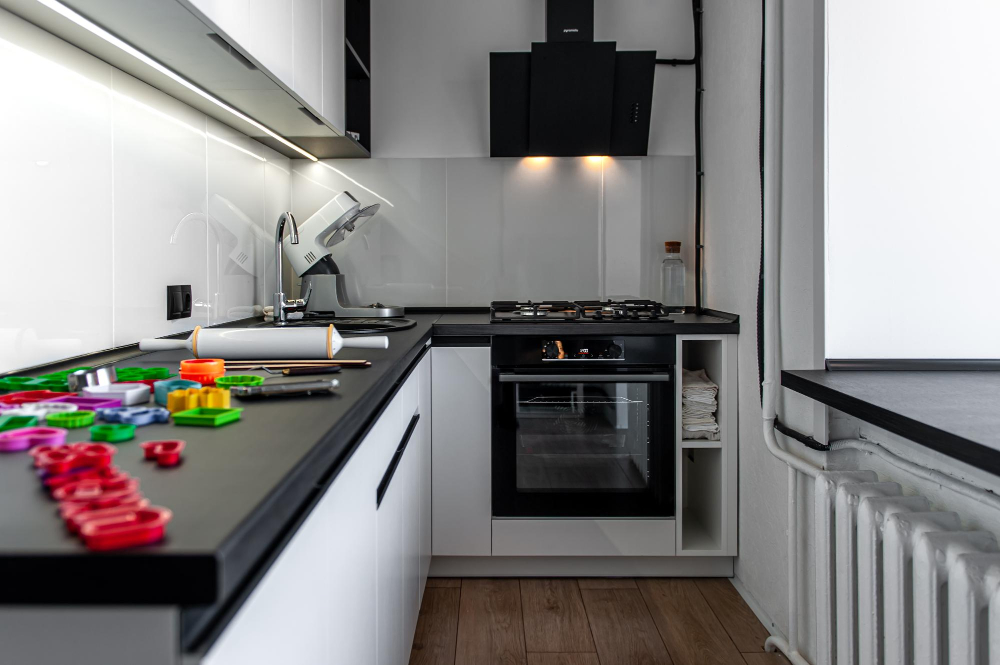
While glass backsplashes can be a stunning addition to any kitchen, they do come with some drawbacks. For one, they are more prone to scratches and cracks than tile backsplashes.
This means that you’ll need to be extra careful when handling heavy pots and pans or sharp utensils near the surface. Another potential downside of glass is that it can show fingerprints and smudges easily, which may require frequent cleaning.
If you opt for a colored or patterned glass backsplash, it may not be as easy to replace if you decide down the line that you want a different look. Lastly, while many people love the sleek modern look of a full-glass backsplash without grout lines interrupting its flow; others find this design too sterile-looking for their taste.
Despite these cons though; there are still plenty of reasons why homeowners choose glass over tile – from its reflective properties creating an illusion of space in smaller kitchens -to being able to customize your own unique design by printing images onto tempered safety glasses- making them perfect for those who want something truly unique in their home renovation project.
Tile Backsplash Advantages
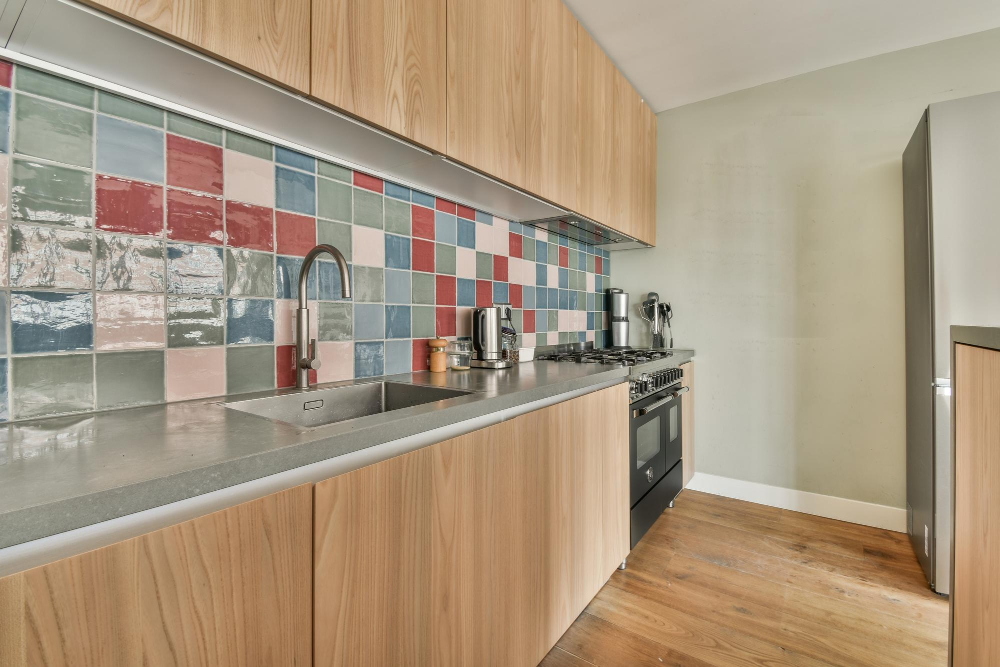
After discussing the pros and cons of a glass backsplash with Sarah, we moved on to tile. I explained that one of the biggest advantages of choosing a tile backsplash is its durability.
Unlike glass, which can crack or chip easily if hit by something hard, tiles are much more resistant to damage. Another advantage is that there are endless design options when it comes to tiles.
From classic subway tiles in neutral colors like white or gray to intricate mosaic patterns in bold hues – you can truly customize your kitchen’s look with this option. Tile also tends to be less expensive than glass per square foot and easier for DIY installation since they come in sheets rather than individual pieces like some types of glass mosaics do.
While both options have their own unique benefits and drawbacks depending on your needs and preferences as well as budget constraints; it’s important not only consider aesthetics but practicality too before making any final decisions about what type will work best for you!
Tile Backsplash Disadvantages
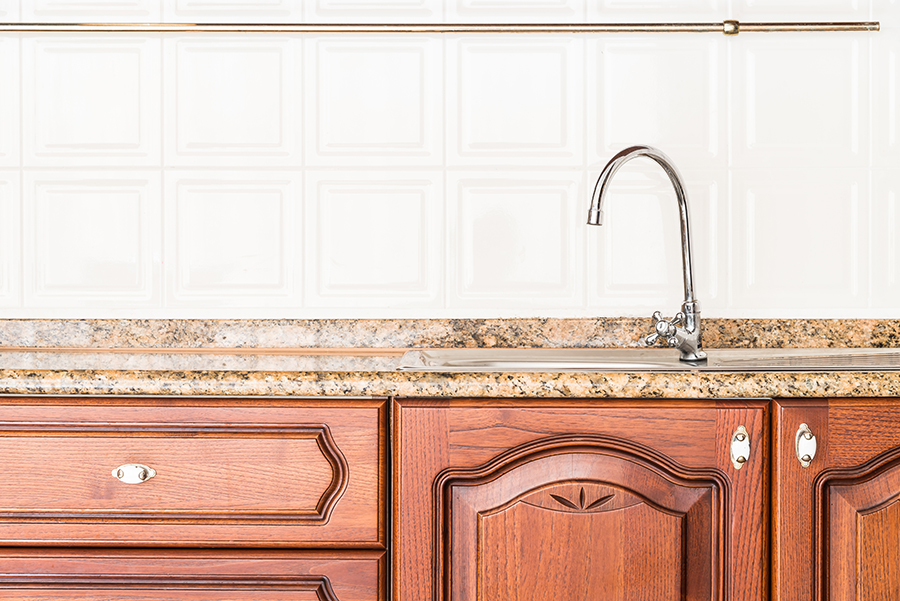
While tile backsplashes have their advantages, they also come with a few disadvantages that homeowners should consider before making a decision. Sarah was particularly concerned about the maintenance and durability of tile backsplashes.
One disadvantage of tiles is that they can be difficult to clean, especially if you choose textured or porous tiles. Grout lines can also become stained over time and require regular cleaning to keep them looking fresh.
Another issue with tile backsplashes is their susceptibility to cracking or chipping. This is particularly true for ceramic tiles which are more prone to damage than other materials like porcelain or glass.
Installing a tiled backsplash requires precision and skill – something that not all DIY enthusiasts possess. If you’re planning on doing it yourself, make sure you have the necessary tools and experience before attempting this project.
Despite these drawbacks, many homeowners still prefer tiled backsplashes because of their versatility in design options as well as affordability compared to other materials like glass.
Installation Comparison
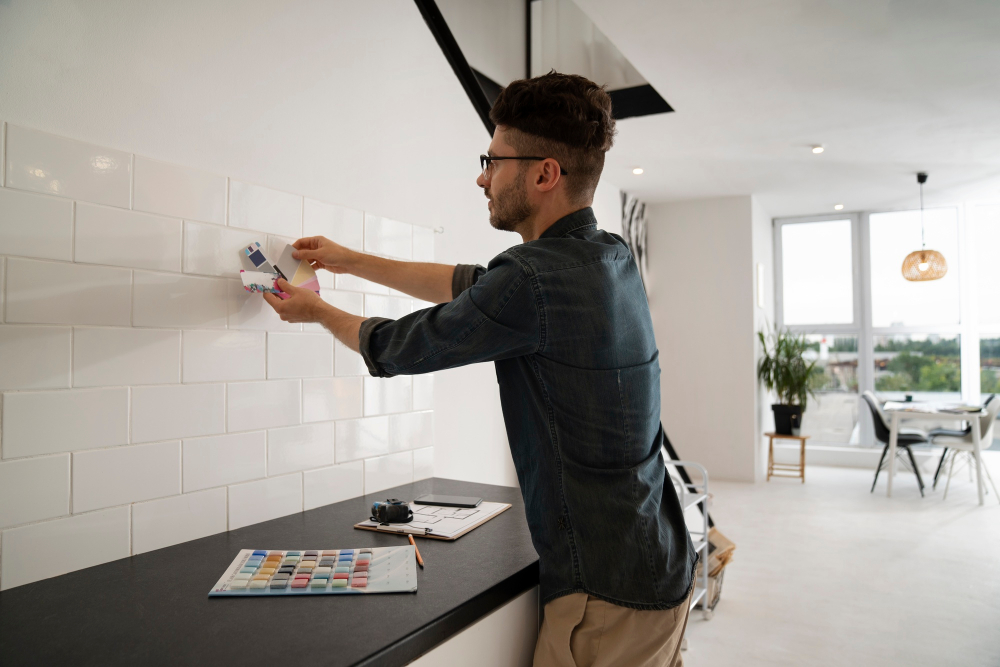
After discussing the pros and cons of glass and tile backsplashes with Sarah, we moved on to the installation process. This is an important factor to consider when making your decision because it can affect both cost and time.
Glass backsplashes are typically installed in large sheets, which means there are fewer grout lines. This makes them easier to clean but also more difficult to install since they require precise measurements and cutting.
Glass backsplash installation should be done by a professional as it requires special tools such as diamond blades for cutting.
On the other hand, tile backsplashes come in smaller pieces that can be easily cut with a wet saw or snap cutter. They have more grout lines than glass which may make cleaning slightly harder but also allows for greater design flexibility since you can mix different colors or patterns together.
While both options require some level of skill during installation; tiles tend to be less expensive due their ease of handling compared with glass sheets that need specialized equipment for proper fitting into place.
Maintenance and Cleaning
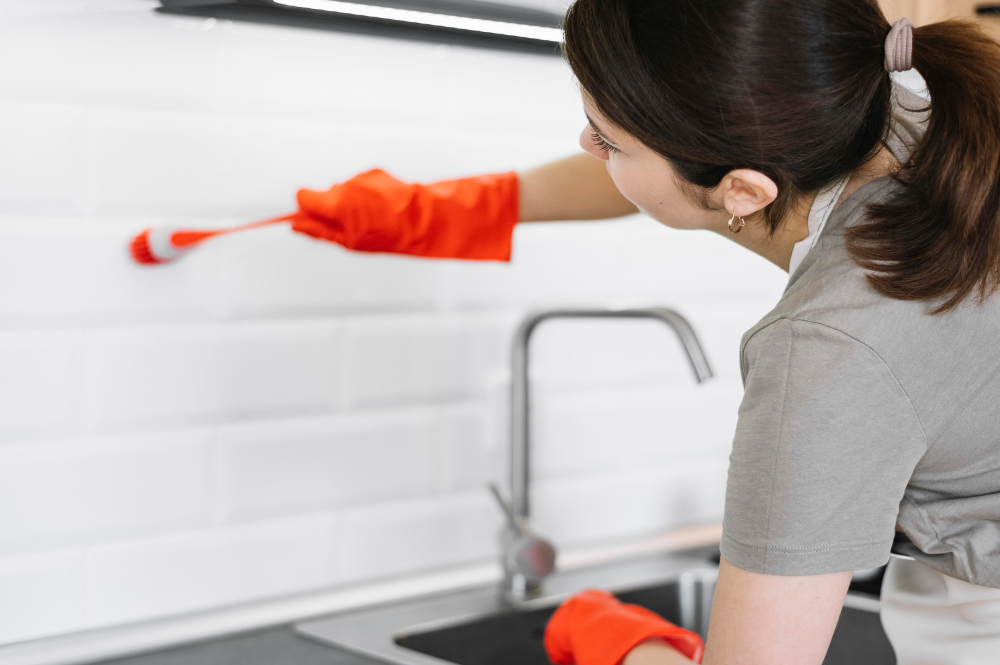
After discussing the design options and cost analysis, Sarah was still unsure which backsplash to choose. She then asked me about maintenance and cleaning for both glass and tile backsplashes.
This is an important factor to consider when choosing a material for your kitchen as it can affect the longevity of your investment.
When it comes to maintenance, glass backsplashes are relatively easy to clean with just soap and water or a mild cleaner. However, they do require more frequent cleaning than tile due to their smooth surface that shows every fingerprint or smudge.
On the other hand, tile backsplashes may require more elbow grease during installation but once installed properly they are very durable with minimal upkeep required over time. They can be easily cleaned using any household cleaner without worrying about damaging them.
It’s also worth noting that grout lines in between tiles tend to collect dirt over time which requires regular scrubbing whereas there is no such issue with glass since there are no seams or joints where dirt could accumulate.
Ultimately, when deciding on a material for your kitchen’s new look you should take into account how much effort you’re willing put into maintaining its appearance in addition to its aesthetic appeal so that you make an informed decision based on what works best for you!
Design Options: Glass Vs Tile
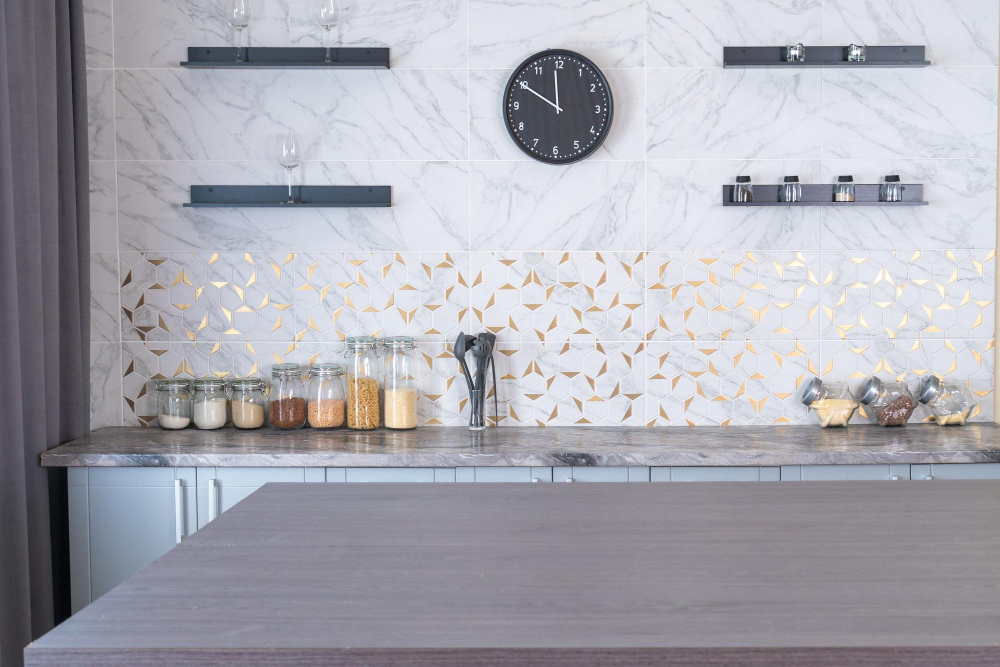
When it comes to design options, both glass and tile backsplashes offer a wide range of choices. Glass backsplashes are known for their sleek and modern look, which can add a touch of sophistication to any kitchen.
They come in various colors, patterns, and textures that can complement different styles.
On the other hand, tile backsplashes offer more versatility when it comes to design options. From classic subway tiles to intricate mosaics or even custom designs made from handmade tiles – there is no limit on what you can create with them.
Going back to Sarah’s dilemma – she wanted something that would tie everything together in her kitchen renovation project. After discussing her preferences further with me as an experienced home decorator who has decorated many homes before; we decided on using glass mosaic tiles for the main area behind the stove while incorporating ceramic subway tiles around the rest of the kitchen walls.
This combination allowed us not only flexibility but also added visual interest by creating contrast between two materials while still maintaining cohesiveness throughout all areas within this space!
When deciding between glass vs tile backsplash designs consider your personal style preference along with practicality factors such as durability & maintenance requirements before making your final decision!
Cost Analysis

After discussing the pros and cons of glass and tile backsplashes with Sarah, we moved on to the cost analysis. This is a crucial factor for most homeowners when making any renovation decisions.
In general, glass backsplashes tend to be more expensive than tile ones. The cost of materials alone can be significantly higher for glass due to its unique properties.
Installation costs are usually higher as well since it requires specialized skills and tools. On the other hand, tile backsplashes offer a wider range of price points depending on the type of tiles used.
Ceramic or porcelain tiles are generally less expensive than natural stone or handmade options like mosaic tiles. It’s important to keep in mind that while upfront costs may differ between these two options, long-term maintenance expenses should also be considered when making your decision.
Glass is easier to clean but can scratch easily while grout lines in tiled backslashes require regular cleaning and resealing over time. Ultimately, it’s up to you as a homeowner which option fits best within your budget without sacrificing quality or design aesthetics that will make you happy every time you step into your kitchen!




